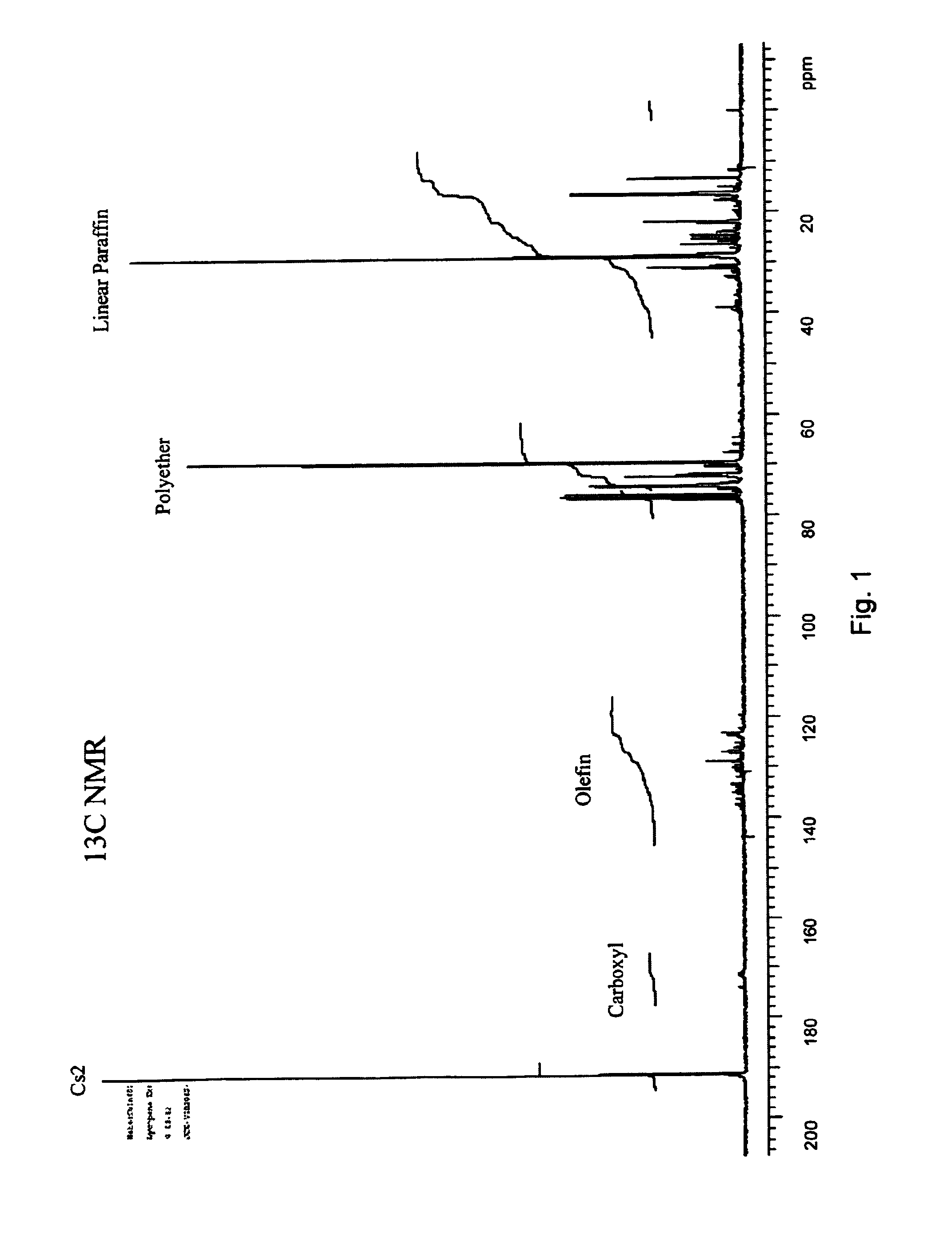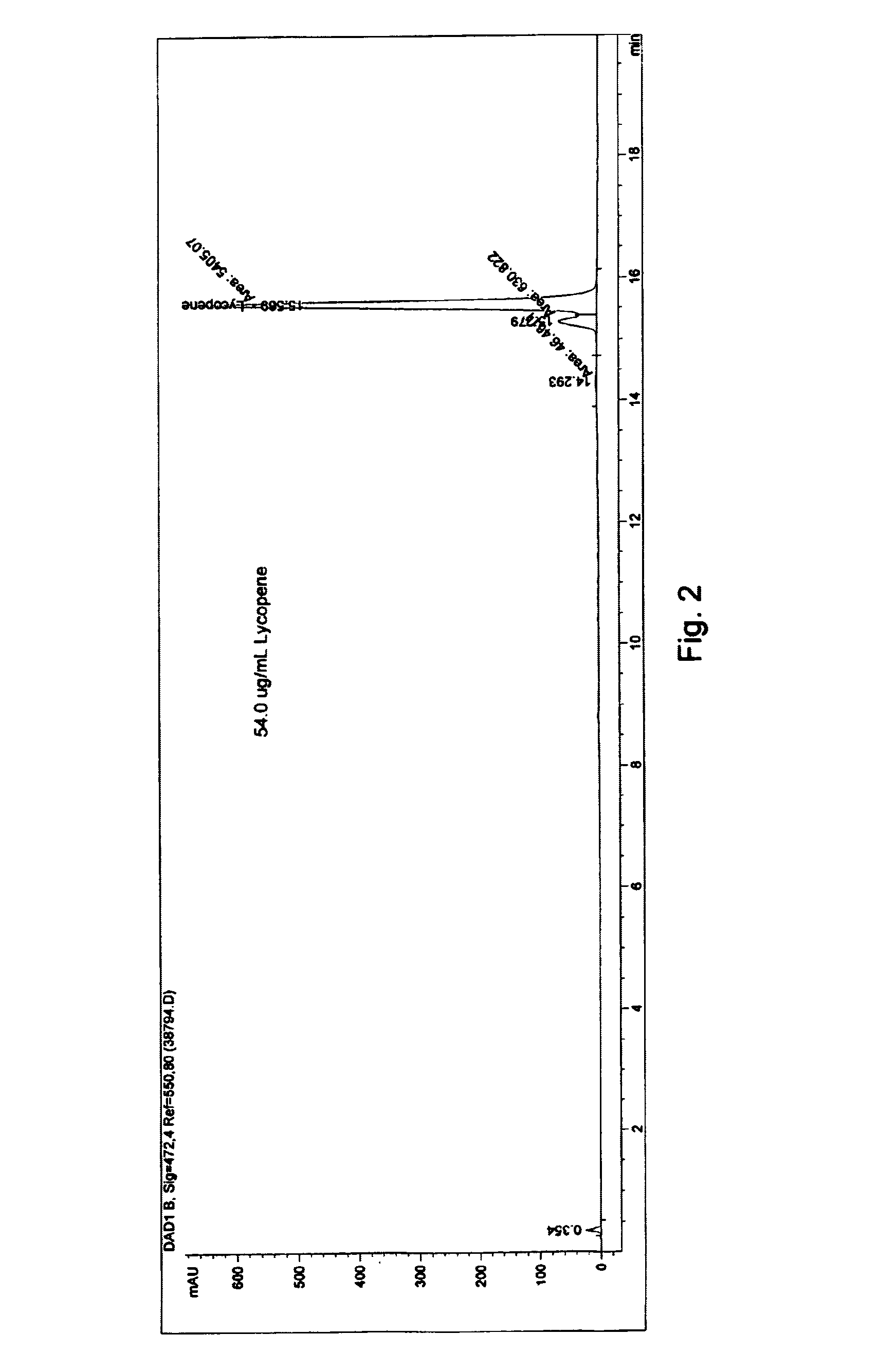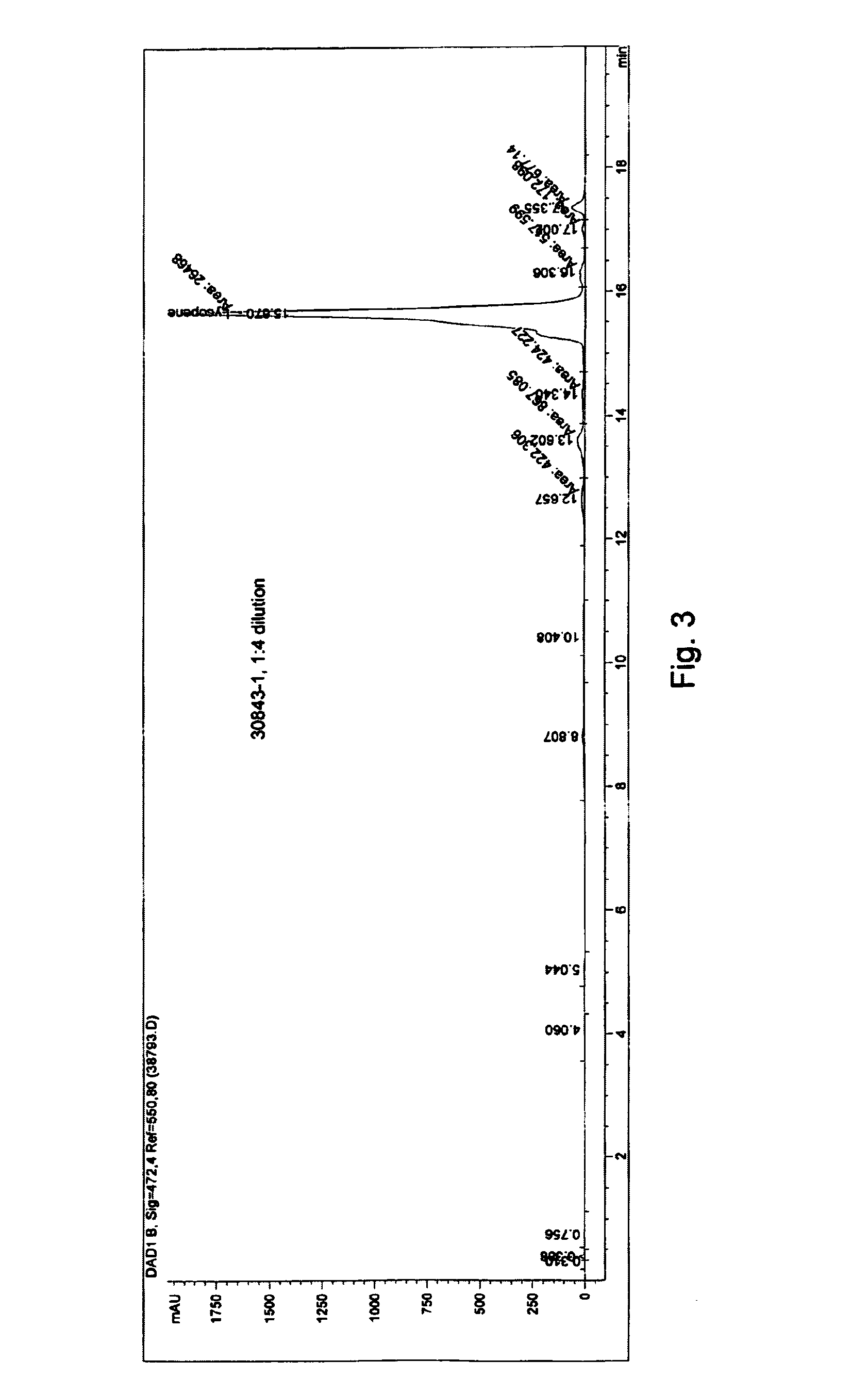Process for extracting carotenoids from fruit and vegetable processing waste
a carotenoids and processing waste technology, applied in the field of processing of extracting carotenoids from fruits and vegetables, can solve the problems of limited carotenoids extracted from the source relative to the total amount of carotenoids presenting the source, low yield and concentration,
- Summary
- Abstract
- Description
- Claims
- Application Information
AI Technical Summary
Problems solved by technology
Method used
Image
Examples
example i
[0063]Five samples were simultaneously tested. One kilogram of solids from the following were evaluated for the extraction of lycopene: sorter table (or wet waste), caustic peel, dry pumice, reject tomatoes, vines only and wastewater byproduct solids. All the solids were minced prior to the admixing step. Water was added to the dry pumice and the vines samples. Each sample was then admixed with 200 milliliters of ethanol and 2 grams of linear alkyl ethoxylate (Olin SLF-18) continuously for 2 hours to form a slurry. The slurry was then divided into approximately equal 200 gram fractions and 200 milliliters of carbon disulfide was added to the first slurry fraction and mixed for 20 minutes. The first slurry fraction was separated into a liquid fraction and a solid fraction. Then a first portion was separated from the liquid fraction. The first portion includes a solution of carbon disulfide, linear alkyl ethoxylate and lycopene which is then added with some small additional am...
example ii
Zeaxanthin and Lutein
[0065]Fresh kale was processed using a food processor in two steps. The entire stem (2″–3″) and leaf (12″–18″) are processed. The first processing step chops the kale into ½″ sections with a slicing blade in the food processor. The source was reprocessed using a chopping blade. The step results in a finely chopped material that is ready for further processing. The above steps are repeated until one kilogram of material is prepared for further processing and evaluation. The source was then admixed with 200 milliliters of ethanol, 500 grams of distilled water and 2 grams of linear alkyl ethoxylate (Olin SLF-18) continuously for 2 hours at a low speed (40–60 rpm) to form a slurry. The slurry was then divided into approximately equal 200 gram fractions and 200 milliliters of carbon disulfide was added to the first slurry fraction and mixed for 20 minutes at medium speed. The first slurry fraction was separated into a liquid fraction and a solid fraction. Then a firs...
example iii
Beta-Carotene
[0066]Fresh carrots were used in this investigation. As discussed above, carrots in various different conditions were used. For example, rejected carrots, sorter table carrots, vines, carrot peels, rotten carrots, etc. Approximately 35% of the exterior of the carrot is used in this investigation. Rather than separate investigations as performed in connection with the lycopene investigations, all various different carrot sources were incorporated together. The source was processed using a food processor as discussed above. This step results in a finely chopped material that is ready for further processing. The above steps are repeated until one kilogram of material is prepared for further processing and evaluation. The source was then admixed with 200 milliliters of ethanol, 500 grams of distilled water and 2 grams of linear alkyl ethoxylate (Olin SLF-18) continuously for 2 hours at a low speed (40–60 rpm) to form a slurry. The slurry was then divided into approximately ...
PUM
 Login to View More
Login to View More Abstract
Description
Claims
Application Information
 Login to View More
Login to View More - R&D
- Intellectual Property
- Life Sciences
- Materials
- Tech Scout
- Unparalleled Data Quality
- Higher Quality Content
- 60% Fewer Hallucinations
Browse by: Latest US Patents, China's latest patents, Technical Efficacy Thesaurus, Application Domain, Technology Topic, Popular Technical Reports.
© 2025 PatSnap. All rights reserved.Legal|Privacy policy|Modern Slavery Act Transparency Statement|Sitemap|About US| Contact US: help@patsnap.com



